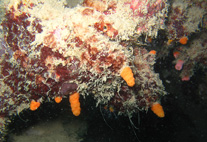Abstract
The confusing and unstable taxonomy of Odorrana livida (Rana livida) since its first record has made it a focal frog complex for systematics. In China, four species, Odorrana nebulosa, O. graminea, O. sinica, O. leporipes, were described to closely resemble O. livida or O. chloronota based on their morphological similarities, accompanied by much taxonomic confusion because of ambiguities in the wide distribution and morphological variations. Currently O. graminea is being used as the name of a provisional monotypic species group to include all the populations in China that closely resemble O. livida or O. chloronota. Here, we conducted a range-wide molecular phylogeographic analysis of the large green odorous frog (Odorrana graminea) complex across the majority of its range in China, based on 2780 bp DNA sequences of three mitochondrial genes (12S, 16S, ND2) in 107 samples from 20 sites. Our data recognized three distinct phylogeographic lineages of the Odorrana graminea (lato sensu) complex in China, and they together with a Thailand lineage formed a monophyletic group. Among the four lineages within O. graminea complex, the average genetic distances based on the concatenated sequences of 12S, 16S and ND2 were 7.5–8.8% and those based on 16S rRNA alone were 4.2–5.5%. Furthermore, canonical discriminant functions in morphometric analyses showed significant separations of all the paired lineage comparisons in China. The aforementioned genetic divergence and mismatched phenotypes among the lineages within the Odorrana graminea complex, in addition to their non-overlapping geographic distributions, imply extensive lineage diversification. However, precise taxonomic status of these lineages needs more studies based on adequate type information and more thorough species delimitation based on analysis of differentiaton in bioacoustic and nuclear genetic characters especially regarding gene flow and admixture in geographical contact zones.

